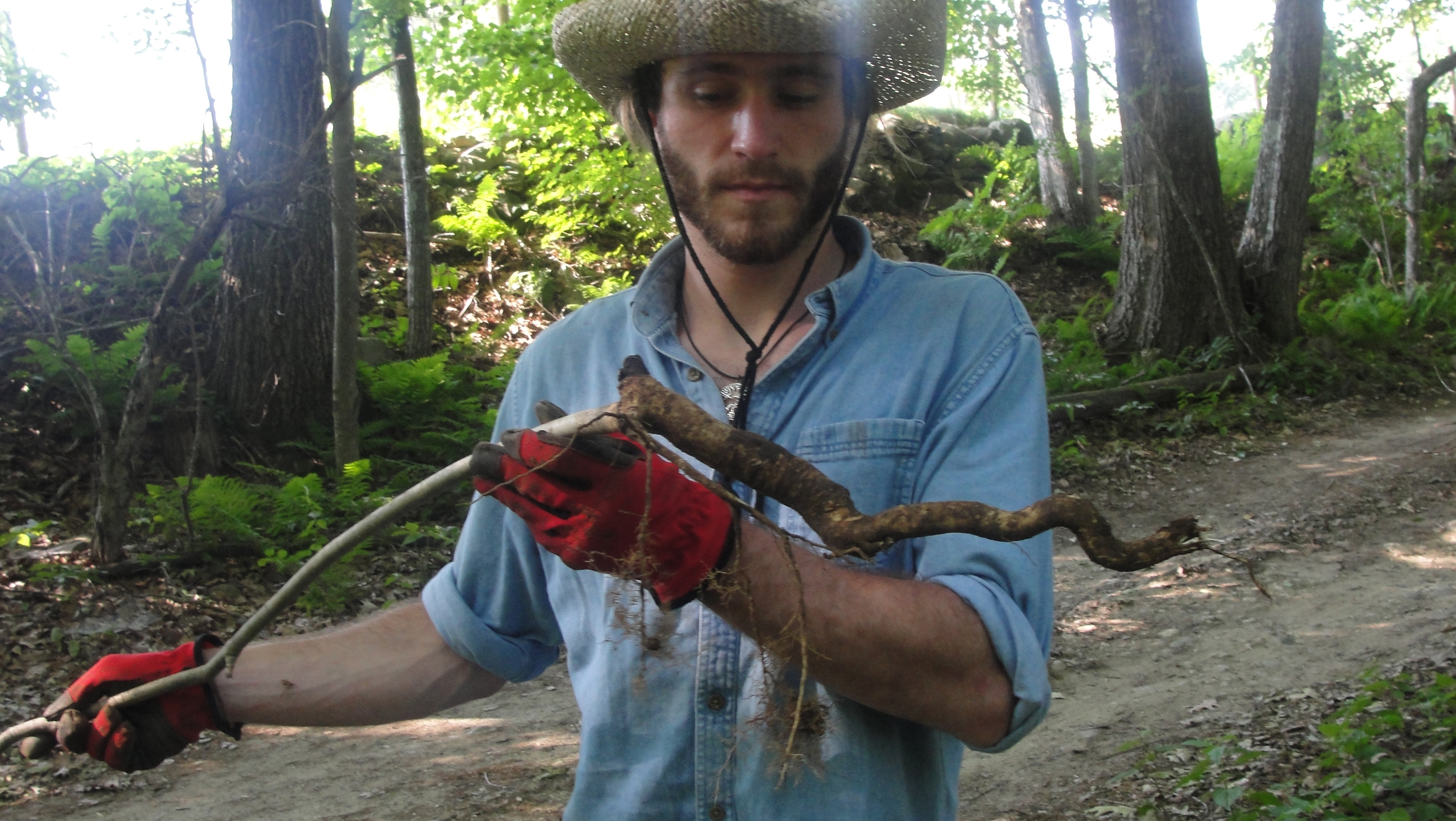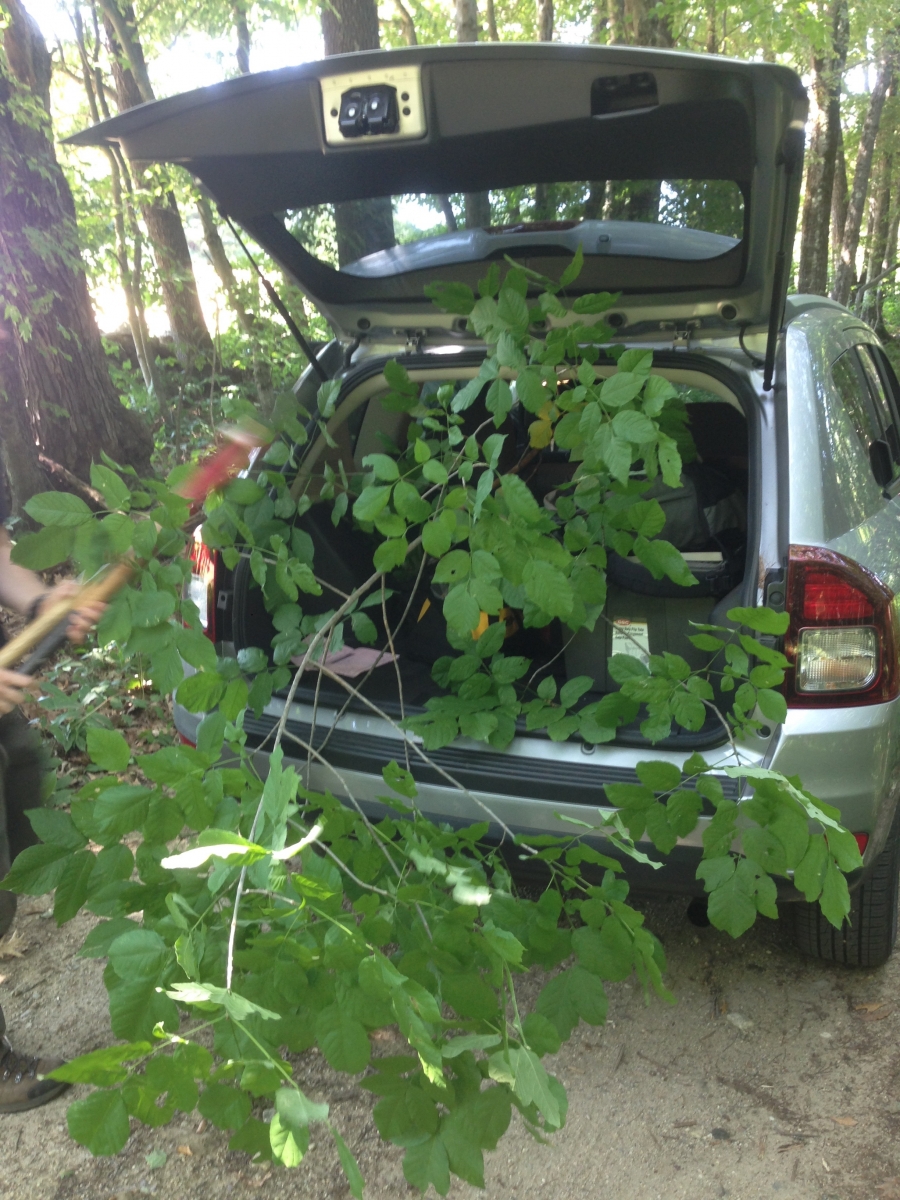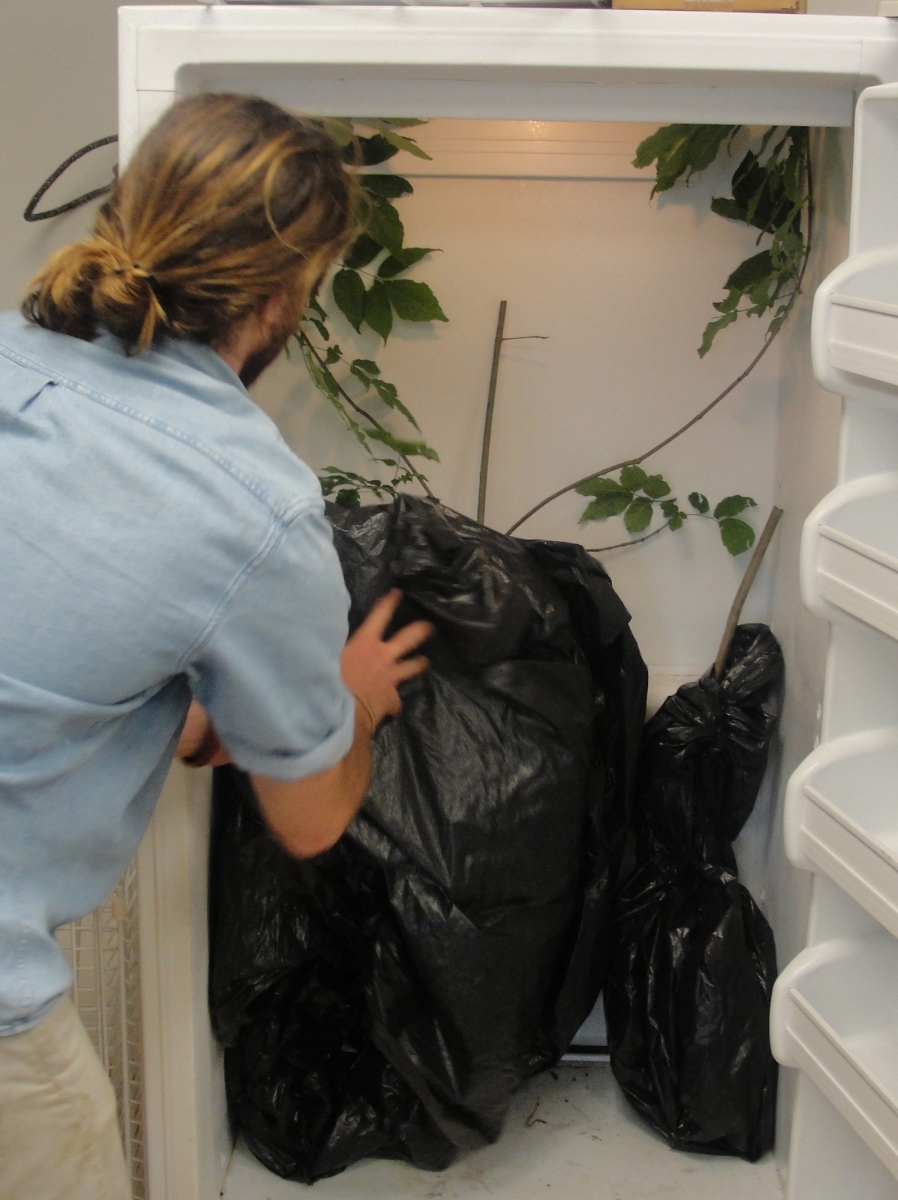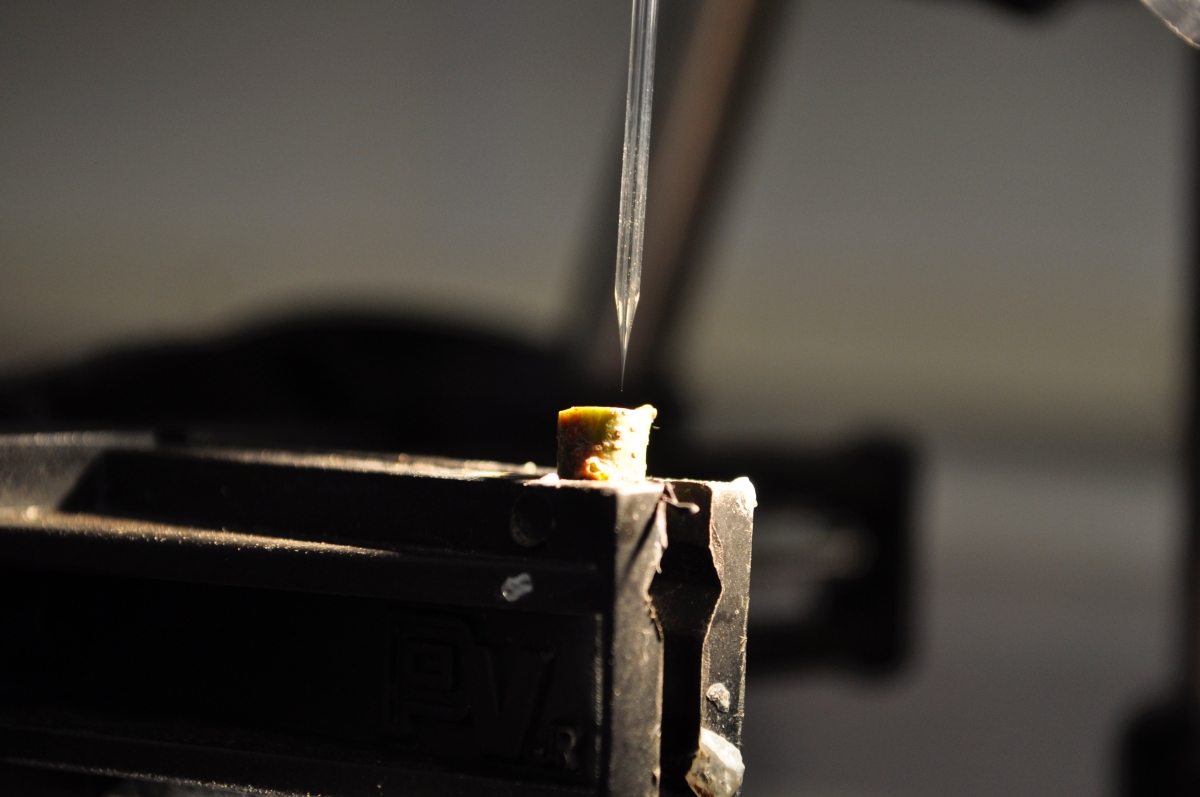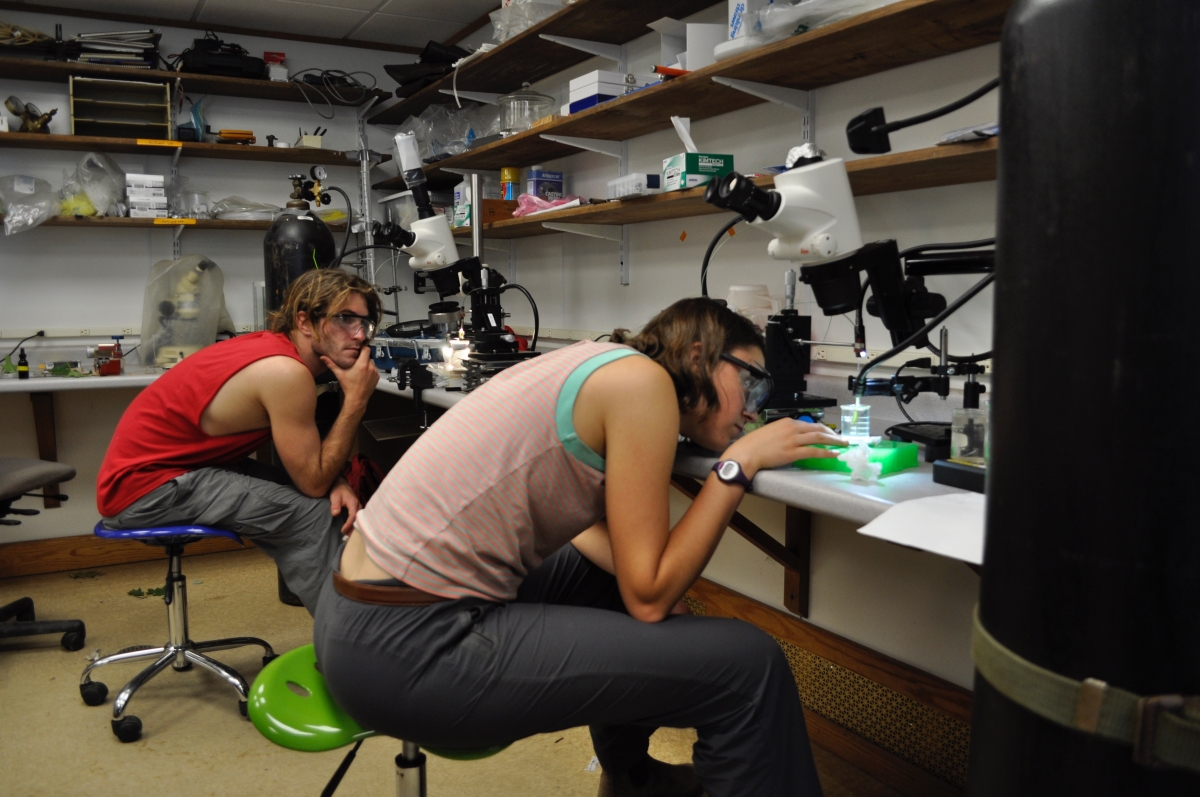You are here
Isn't that Neat?!
The only constant is change, so I’ve heard. Therefore, life is not about changing the future to attain some desirable outcome, which can be difficult, perhaps impossible, in our ever-changing world. Rather, life is about understanding the present to predict the future to guide us through the unknown. With the changing climate, predicting how ecosystems around the world will respond to increases in temperature, atmospheric carbon, and more unpredictable weather patterns is essential in preparing for our future.
With predicted increases of drought in New England, my team at Harvard Forest is launching into the first year of a three-year project to qualify and quantify how New England trees will respond to drought. Our findings may give a basis to predict how forest composition will change in coming years, which is pretty neat. Specifically, we are looking at four major hardwood species that comprise New England temperate forests: red oak, white ash, red maple, and American beech.
But! Before I continue, you need a basic understanding of how trees transport water and why high temperatures and drought are detrimental: Trees transport water to their cells through vessels, called xylem, that run from roots to leaves. (Imagine a 30 meter tower of straws connected end to end.) When water enters the tree at the roots, it travels through the xylem network and evaporates from the leaves through small openings called stomata. That’s transpiration. Transpiration is the basic mechanism responsible for an amazing phenomenon in plant hydraulics: water transport requires absolutely no energy input from the plant.
How is this so? Water is polar and forms hydrogen bonds, which is the basis for one of water’s fundamental characteristics, cohesiveness. Water sticks to itself. So when water transpires from the leaves, it creates a negative pressure within the xylem that pulls water from the leaves to the stomata, which pulls water from the branch to the leaves, which pulls water from the trunk to the branches, and so on all the way to where water is pulled from the soil into the roots. How neat is that?! But, like everything in biology, there are tradeoffs. When the negative pressure within xylem becomes too strong, usually during high temperatures and drought, the hydraulic rope pulling the water snaps, filling a xylem vessel with air and rendering that vessel useless in water transport. Luckily, trees have many xylem vessels that are interconnected, so a couple of embolisms (that’s the air bubbles in the vessel) aren’t too detrimental to the tree. But the more embolized a tree’s xylem becomes, the worse off the tree will be.
This is where my team comes in. With the rise of hotter temperatures and drought in New England, we want to know how trees will respond. There are a couple of methods we perform to gather data that can answer this question, but the main thing I do is a method called air seeding. To collect samples for air seeding, a couple times a week my colleagues, Kate and Jay, and I head out into the Harvard Forest looking for an oak, ash, maple, or beech tree. We dig saplings out of the ground, shove them into a big black trash bag, and lug them back to lab. In the later weeks of the program we evolved from unearthing saplings to sampling upper canopy branches of mature trees using a bucket lift, which is neat.
In lab, along with two additional colleagues, NPR and Spotify, air seeding begins. Air seeding is a fascinating method that involves snipping a segment of the sapling or branch and half submerging it in a beaker of water under a dissecting microscope. Then we take a microcapillary tube with a tapered tip and inject the tip into a xylem vessel. The microcapillary tube is connected to a device called a pressure bomb, which in turn is connected to a nitrogen tank. When we successfully inject a microcapillary tube into a vessel we apply pressure. As the pressure increases, our eyes are fixed on segments semi-submerged in water, and we wait. We wait until the pressure breaches the threshold of a xylem vessel end wall and air rushes out of the segment in a stream of bubbles. The pressure at which this occurs is the maximum negative pressure that a xylem vessel can withstand before embolizing (recall the Bio 101 lesson above). Typically this pressure is ten times the pressure within a car tire! That’s really neat.
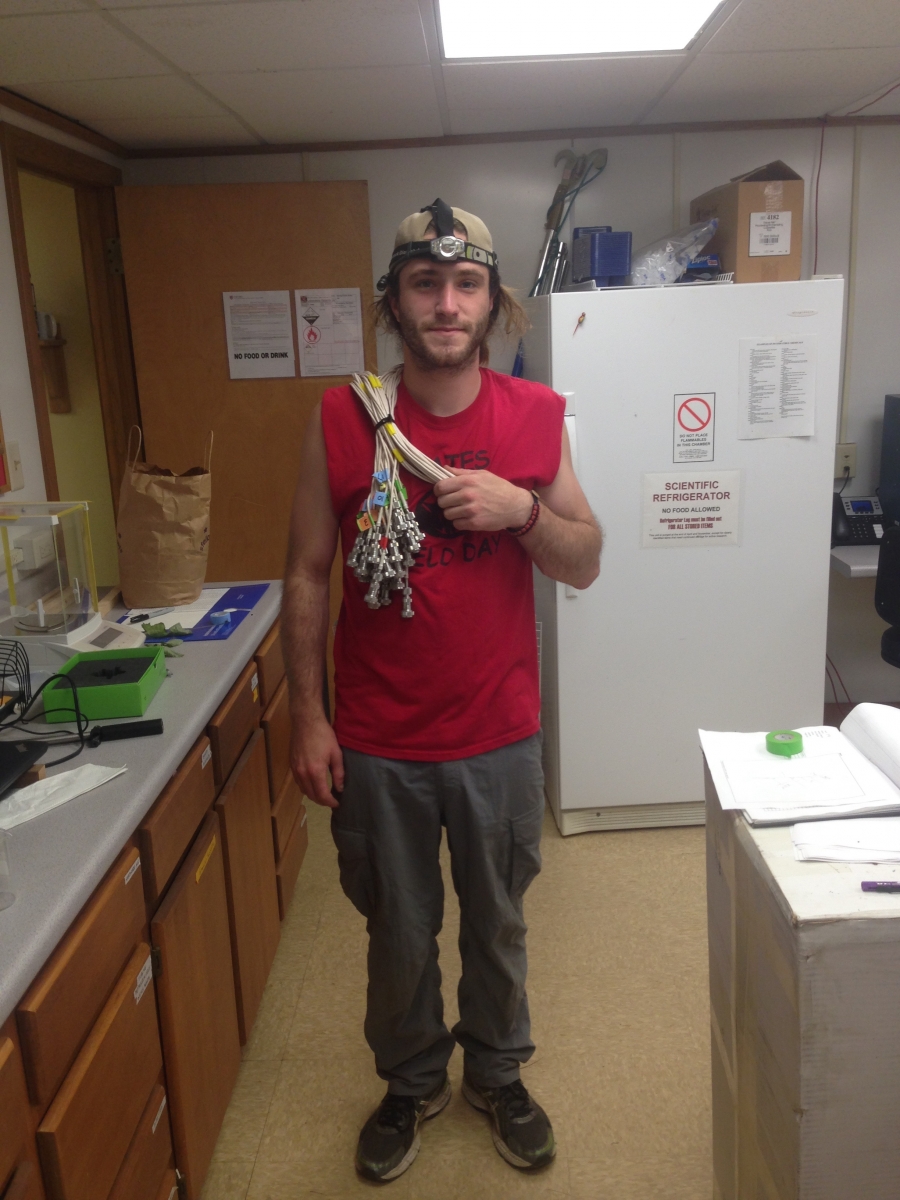 As satisfying and rewarding as it is to get a successful measurement, things sometimes get tricky and frustrating. There is a lot waiting and missed measurements, but there are many more things to do in lab to change up the pace. In the later weeks of the program we began taking water potential measurements of the different tissue types in saplings and mature trees. Our goal for data collection was to get pre-dawn and mid-day measurements to compare the water potentials when the trees are less stressed and most stressed, respectively. This involves going out into the field before sunrise (around 4:15-4:30) and mid-day (around 1:00-2:00). Pre-dawns, as we call them, are actually quite fun, contrary to popular belief. I typically go to bed at 11-12 and wake up around 3:30 a.m. You’d think I’d be a zombie by now, but there is something about 4:00 in the morning that zaps you awake. Maybe it’s because 4 a.m. is the most eerie and desolate time of day...or maybe it’s the 3 cups of coffee I chug. Either way I’m awake and it’s time to start work. By the time we are done collecting samples, the sun has come up and the forest starts to wake with the sounds of song birds and scavenging squirrels. I’ve come to realize the tranquility and peacefulness at this time of day is a very special, rarely experienced adventure. I’ll always wake up for more.
As satisfying and rewarding as it is to get a successful measurement, things sometimes get tricky and frustrating. There is a lot waiting and missed measurements, but there are many more things to do in lab to change up the pace. In the later weeks of the program we began taking water potential measurements of the different tissue types in saplings and mature trees. Our goal for data collection was to get pre-dawn and mid-day measurements to compare the water potentials when the trees are less stressed and most stressed, respectively. This involves going out into the field before sunrise (around 4:15-4:30) and mid-day (around 1:00-2:00). Pre-dawns, as we call them, are actually quite fun, contrary to popular belief. I typically go to bed at 11-12 and wake up around 3:30 a.m. You’d think I’d be a zombie by now, but there is something about 4:00 in the morning that zaps you awake. Maybe it’s because 4 a.m. is the most eerie and desolate time of day...or maybe it’s the 3 cups of coffee I chug. Either way I’m awake and it’s time to start work. By the time we are done collecting samples, the sun has come up and the forest starts to wake with the sounds of song birds and scavenging squirrels. I’ve come to realize the tranquility and peacefulness at this time of day is a very special, rarely experienced adventure. I’ll always wake up for more.
It all goes to show, from the lab to the field, no matter how busy and frustrating the working life of a researcher can be, there are always the perks that make it all worth it. Perks like the adventures, waking up before the forest, seeing the sunrise from a bucket lift, getting that satisfying rush of bubbles, or lighting our path through the unknown like a head lamp through the woods at 4 a.m. Now isn’t that just pretty neat.

